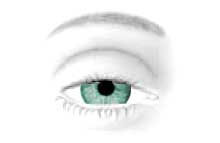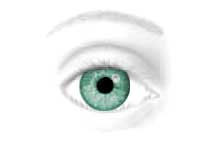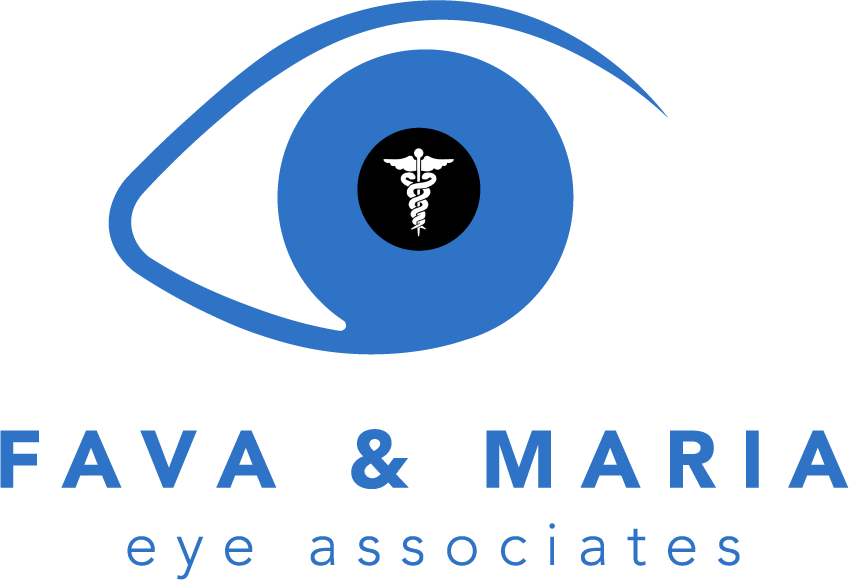Droopy Eyelid (Ptosis)
 When the upper eyelid margin begins to droop down toward the pupil, this is termed blepharoptosis, or simply, ptosis. Droopy eyelid is different from dermatochalasis, which is eyelid sagging from extra eyelid skin hanging down over the eyelashes that combines with excess muscle and fat to bulge forward. Because both ptosis and dermatochalasis can pose cosmetic problems or actually block vision, an upper eyelid lift, droopy eyelid treatment and eyelid sagging treatments are often necessary. The most common cause of ptosis in adults is a levator aponeurosis dehiscence, or tendon stretch or tear due to aging, which an upper eyelid lift can address. In children, the most common cause is poor development of the levator muscle, which an upper eyelid lift, an eyelid operation or droopy eyelid treatment can address. Adults can also have ptosis caused by nerve or muscle problems. In many cases, to correct droopy eyelid, you must have surgery for droopy eyelids or an upper eyelid lift. If droopy eyelids interfere with the vision, insurance might cover most of the droopy eyelid treatment. When combined with dermatochalasis, many insurances will only cover the ptosis upper eyelid lift surgery, (the surgery for droopy eyelids), whereas the correction of the excess skin, muscle and fat (dermatochalasis) is considered cosmetic, which may result in some out-of-pocket cost to the patient.
When the upper eyelid margin begins to droop down toward the pupil, this is termed blepharoptosis, or simply, ptosis. Droopy eyelid is different from dermatochalasis, which is eyelid sagging from extra eyelid skin hanging down over the eyelashes that combines with excess muscle and fat to bulge forward. Because both ptosis and dermatochalasis can pose cosmetic problems or actually block vision, an upper eyelid lift, droopy eyelid treatment and eyelid sagging treatments are often necessary. The most common cause of ptosis in adults is a levator aponeurosis dehiscence, or tendon stretch or tear due to aging, which an upper eyelid lift can address. In children, the most common cause is poor development of the levator muscle, which an upper eyelid lift, an eyelid operation or droopy eyelid treatment can address. Adults can also have ptosis caused by nerve or muscle problems. In many cases, to correct droopy eyelid, you must have surgery for droopy eyelids or an upper eyelid lift. If droopy eyelids interfere with the vision, insurance might cover most of the droopy eyelid treatment. When combined with dermatochalasis, many insurances will only cover the ptosis upper eyelid lift surgery, (the surgery for droopy eyelids), whereas the correction of the excess skin, muscle and fat (dermatochalasis) is considered cosmetic, which may result in some out-of-pocket cost to the patient.
Sagging Eyelids (Dermatochalasis)
 Redundant skin, muscle and fat may form in the upper and lower eyelids as a result of aging or inheritance. Sagging eyelids can even appear in one’s early 20s but is much more common in those over 50. Eyelid sagging treatments are most frequently considered a cosmetic problem, but the upper lids can occasionally block a patient’s superior visual field and affect vision. The redundant skin and fat can be removed through surgery for the eyelids and is called a blepharoplasty.
Redundant skin, muscle and fat may form in the upper and lower eyelids as a result of aging or inheritance. Sagging eyelids can even appear in one’s early 20s but is much more common in those over 50. Eyelid sagging treatments are most frequently considered a cosmetic problem, but the upper lids can occasionally block a patient’s superior visual field and affect vision. The redundant skin and fat can be removed through surgery for the eyelids and is called a blepharoplasty.
Outside of eyelid sagging treatments and surgery for the eyelids, modern eyebrow and forehead surgery may be most appropriate when upper eyelid fullness is secondary to drooping of the brows and forehead. While excessive fullness in the lower lids is typically undesirable, we have learned that modest fullness of the midface is actually a sign of youth. With time, hollowness can encroach on the midface, causing an aged appearance. In such cases, re-suspension of facial tissues or placement of midface grafts, implants, or fillers may actually be the best approach to lower lid rejuvenation. Deciding what sagging eyelids surgery, eyelid sagging treatments or cosmetic options to choose are determined by a consultation with the best ophthalmologist near you.
Eyelids That Turn in (Entropion)
 Eyelid skin may become unstable with aging or scarring processes. As a result, the eyelid margins may turn inward, pushing the eyelashes against the cornea. This is termed entropion. Eyelids that turn in are more common in the lower lid than the upper, but both can occur and can be addressed by surgery for eyelids. Upper eyelid entropion is more common with scarring processes while the lower eyelid is more susceptible to aging changes. Entropion can lead to severe corneal irritation and vision-threatening scarring. Fortunately, this problem can usually be repaired through surgery for the eyelids with an eyelid operation that occurs in an outpatient setting.
Eyelid skin may become unstable with aging or scarring processes. As a result, the eyelid margins may turn inward, pushing the eyelashes against the cornea. This is termed entropion. Eyelids that turn in are more common in the lower lid than the upper, but both can occur and can be addressed by surgery for eyelids. Upper eyelid entropion is more common with scarring processes while the lower eyelid is more susceptible to aging changes. Entropion can lead to severe corneal irritation and vision-threatening scarring. Fortunately, this problem can usually be repaired through surgery for the eyelids with an eyelid operation that occurs in an outpatient setting.
Eyelids That Turn Out (Ectropion)
 The lower eyelid can rotate outward as a result of aging, trauma, scarring, or facial paralysis. This is called ectropion. Typical symptoms include tearing and eye irritation. The upper lid is rarely affected. This problem is also fixed with surgery for the eyelids or an eyelid operation, typically after a consultation with an ophthalmologist near you.
The lower eyelid can rotate outward as a result of aging, trauma, scarring, or facial paralysis. This is called ectropion. Typical symptoms include tearing and eye irritation. The upper lid is rarely affected. This problem is also fixed with surgery for the eyelids or an eyelid operation, typically after a consultation with an ophthalmologist near you.
Eyelashes Rubbing the Eyes (Trichiasis)
Eyelashes of the upper or lower eyelid may grow inward, causing irritation of the eye. This can be inherited or be caused by entropion, scarring or eyelid inflammation. These aberrant eyelashes can be corrected with eyelid inflammation treatments like surgery for the eyelids, freezing, or electrolysis.
Schedule a Consultation to Discuss Eyelid Treatment and Surgery Options.


Saturday By Appointment Only